The powerful storm that brought torrential rain and hurricane-force winds to Maine last week is over, but the work to assess and repair damage in coastal towns is just beginning.
The Dec. 23 storm knocked out power to more than 300,000 homes, eroded dunes, washed out roads and ripped siding and shingles from buildings. In Cape Elizabeth, the iconic Portland Head Light was pummeled with 20 to 30-foot waves that were strong enough to lift a granite slab under a 1,000-pound bell.
“That was the most significant wave action I’ve seen,” said Cape Elizabeth Town Manager Matthew Sturgis. “It was spectacular.”
Central Maine Power Co. said Tuesday night that power had been restored to all its customers who lost electricity. The restoration effort, which lasted through Christmas Eve and Christmas, included resetting more than 300 broken utility poles.
“Our customers have been patient and have had nothing but supportive things to say to all of these lineworkers out restoring power since Friday,” Joe Purington, president and CEO of CMP, said in a statement. “This goodwill goes a long way over a holiday spent away from families, and our lineworkers and tree crews – and all of our visiting contractors – were simply committed to getting power back as quickly as they could given the holiday and the cold weather.”
Purington also thanked local businesses and communities who fed hungry crews over the Christmas holiday.
Versant Power Co., which serves customers in northern Maine and Down East, said that just over 2,050 customers were still without power at 9 p.m. Tuesday. Hancock County was its hardest hit region with 1,723 customers still in the dark four days after the storm. Versant said line crews encountered extensive damage and broken utility poles in Hancock, and that power won’t be restored to all county customers until Wednesday.

Portland Head Light is taped off on Tuesday to keep visitors away from the damage caused by last weeks storm. Shawn Patrick Ouellette/Staff Photographer
With the storm – and the holiday weekend – now over and power mostly restored, municipalities and private property owners are assessing and repairing the damage, a process that could take days to weeks.
The Maine Emergency Management Agency has already begun to work with county and local officials to conduct initial damage assessments across the state, said Ben Goodman, spokesman for Gov. Janet Mills. If those assessments meet the minimum thresholds required to qualify for a Major Disaster Declaration, federal Emergency Management Agency staff will come to Maine to confirm the damage.
If federal inspectors agree with state assessments, Mills will ask President Biden make a disaster declaration, which can unlock a range of federal relief for individuals and public infrastructure repairs. The state will have 30 days from the start of the storm to assess damage and submit an application.
The holiday weekend storm stretched across the country; some areas were hit with heavy snow and hard freezes shut down water systems in the South.
Some of the hardest hit areas in Maine were in coastal York County, where high winds and heavy rains combined with an astronomical high tide to push seawater over seawalls and roads.
“It was a very challenging storm at the most inopportune time,” said Wells Town Manager Michael Pardue.
At the height of the storm, Mile Road in Wells was under water and a police officer rescued a driver who was stranded as the water rose around her car. Police closed roads near the beach as waves crashed over oceanfront homes. When the water receded, it left behind a thick layer of seafoam.

Erin Mullaney, left, and Wyatt Bigley shovel beach stones from the edge of Denise Charette’s driveway along Webhannet Drive in Wells on Tuesday. Mullaney and Bigley were walking by as Charette was trying to shovel the stones and offered to help clear them for her. Charette says that her home made it through the storm without damage, though a shed in the backyard flooded. Gregory Rec/Staff Photographer
A section of Webhannet Drive, which snakes along the coast, remains closed because of heavy damage. An engineering firm was working with town staff Tuesday to get a clearer idea of the storm’s impact, Pardue said. He is concerned that the storm caused significant damage to Webhannet Drive and other roads and bridges near the beach.
Some beachfront homes appear to have significant damage, but there were no reports of injuries, Pardue said.
“In talking with people who have lived in Wells for many, many years, we’re all in agreement that this storm was probably the most impactful to us as a community,” he said.
Damage assessment is also underway in Old Orchard Beach, where there was significant flooding in the town square and along West Grand Avenue. New Salt Road in Ocean Park washed away, but it is too soon to say how much it will cost to repair or how long that will take, said Town Manager Diana Asanza. Town crews have already been busy clearing sand left behind when the water receded.
“The flooding that took place with the astronomical high tide really did a number,” Asanza said.
She said the town was lucky it was spared from more significant damage. There were no injuries reported, though the fire department had to help some people out of cars trapped on flooded streets and in homes surrounded by water.
‘RELATIVELY UNSCATHED’
The York County Emergency Management Agency will gather damage assessments from towns to see if the county meets the threshold for a disaster declaration.
Federal disaster assistance in Maine was last made available in York, Knox and Waldo counties following a severe winter storm with flooding on Oct. 3o and 31, 2021.
At the height of the storm, people gathered at Fort Williams in Cape Elizabeth to watch as waves between 20 and 30 feet pummeled Portland Head Light and the surrounding rocks. Dramatic photos and videos shared widely on social media showed waves slamming into the lighthouse.
Sturgis, the town manager, said he’s never seen anything like it. But he also recognized that it was unsafe and the town closed the park for the rest of the day to make sure no one was hurt.
“Lots of people were there during the storm and we had to turn them away,” he said. “It’s exciting until someone gets pulled away by waves.”

Denise LaRue of South Portland cleans debris washed up along the walkway to the beach at the end of Myrtle Avenue at Willard Beach in South Portland on Tuesday. Shawn Patrick Ouellette/Staff Photographer
Those strong waves broke five windows and blew out a door, sending a huge volume of water through the keeper’s quarters and museum, Sturgis said. The waves demolished hardscaping that had just been installed and lifted up the granite that holds the lighthouse’s original fog bell. There is damage to the siding of the building, but the light never stopped working.
Sturgis said the town, which owns the lighthouse, is starting to assess the “significant damage” to the building and figuring out what repairs will be needed. During the storm, town employees were able to secure the building, which Sturgis said “was nothing short of a herculean task with the wind and the waves.”
Cape Elizabeth’s Community Center was closed Tuesday while crews cleaned up damage caused by the storm. Photos posted on Facebook show flooded floors and a section of ceiling that collapsed. Classes normally held at the community center have been postponed until further notice.
The high winds and waves washed away dunes and knocked down signs and fencing at Willard Beach in South Portland, but things could have been much worse, said Karl Coughlin, the city’s director of parks, recreation and waterfront.
“Thankfully and surprisingly, we’re coming out of this relatively unscathed,” he said.
Siding and shingles blew off a couple of the historic fishing shacks at Fisherman’s Point and an assessment will be done to ensure they are stable. At Willard Beach, the dunes did their job and protected the neighborhood from flooding, Coughlin said. The city will need to put sand traps in to rebuild the dunes.
“We didn’t have one city tree come down,” Coughlin said. “All things considered, we’re faring a lot better than other communities.”

Visitors take photographs of a damaged Fort Preble in South Portland on Tuesday. Shawn Patrick Ouellette/Staff Photographer
There was no major damage at Fort Preble on Southern Maine Community College’s campus, despite photos widely circulated on social media that people said showed a section of the stone wall that had been damaged by the storm.
Joe Cassidy, SMCC president, said the pace of erosion and damage to the remains of the fort have picked up in recent years and were damaged by previous storms. Friday’s weather caused a bit more damage, but it was not significant, he said. The college has been monitoring the fort’s condition and looking for options to address it.
Over the weekend, city staff and volunteers were busy clearing up debris. They’ll soon start replacing fencing and rehanging signs brought down by the storm.
Staff Writer Dennis Hoey contributed to this story
Send questions/comments to the editors.


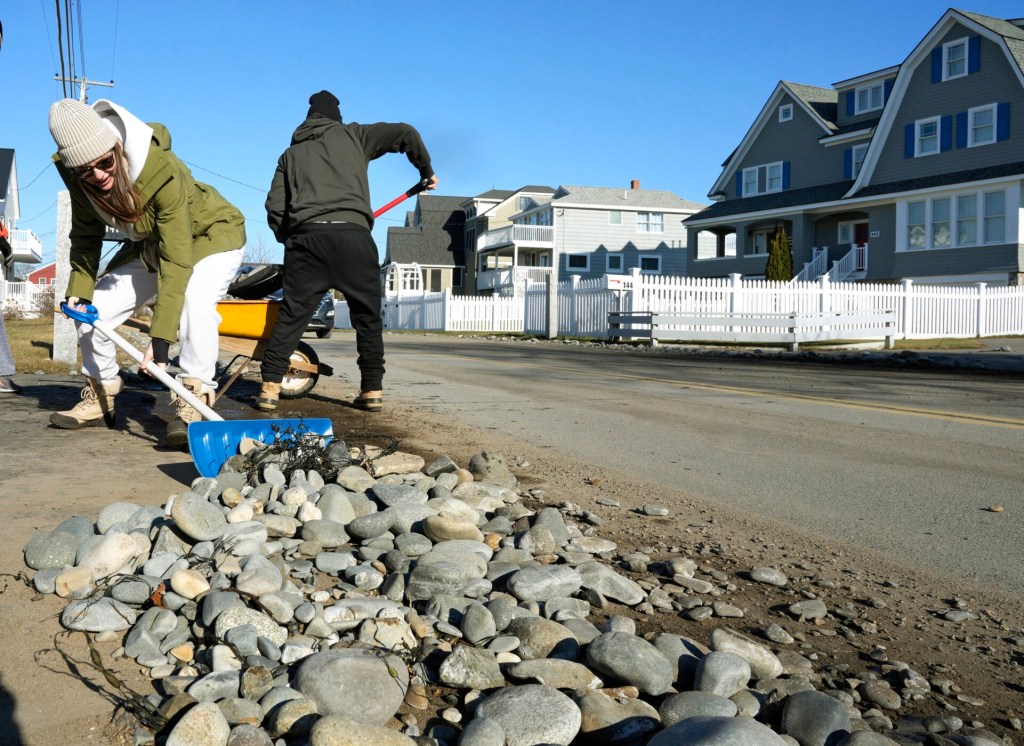
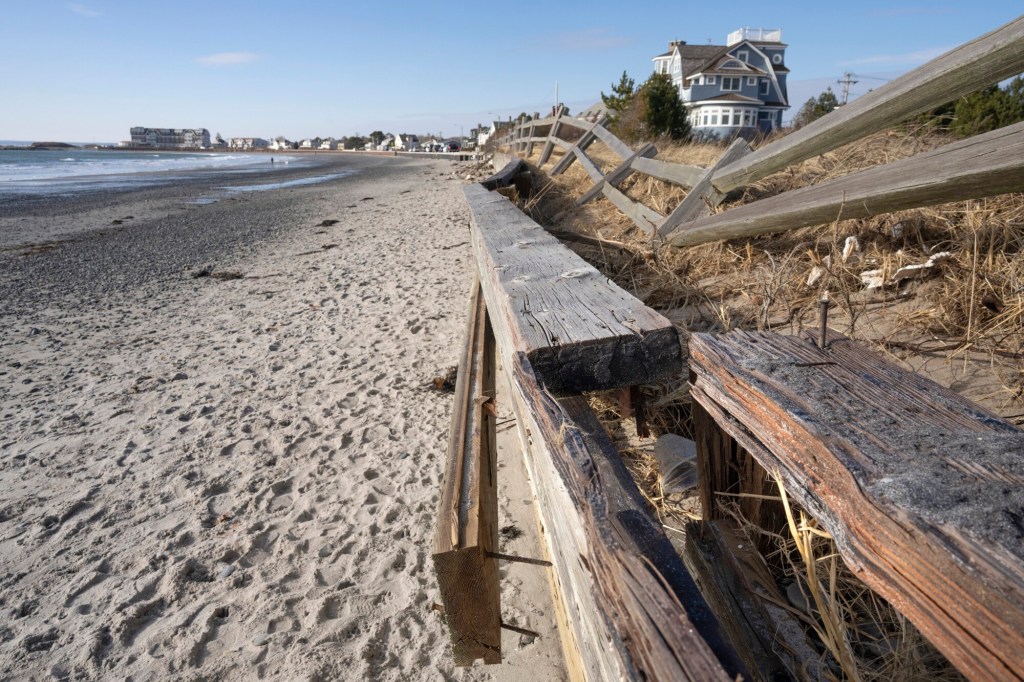
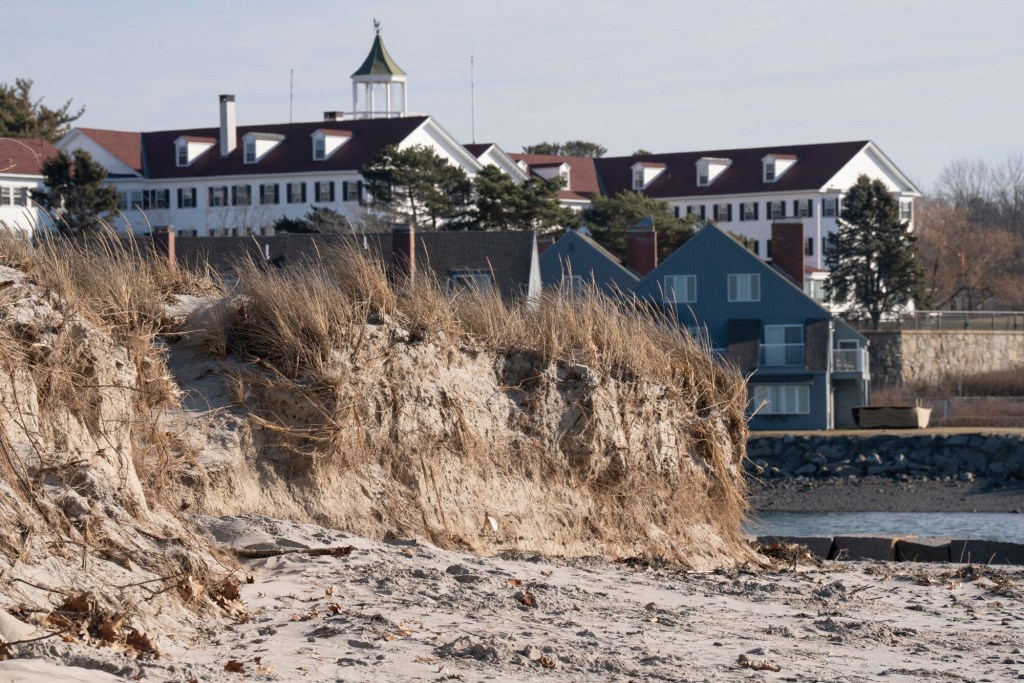
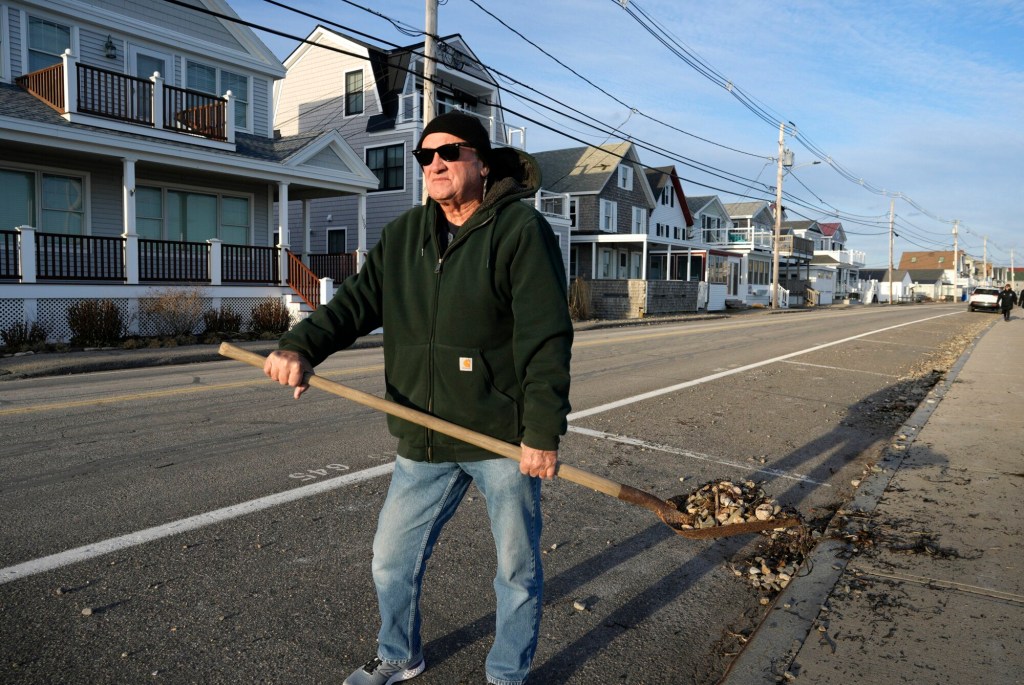
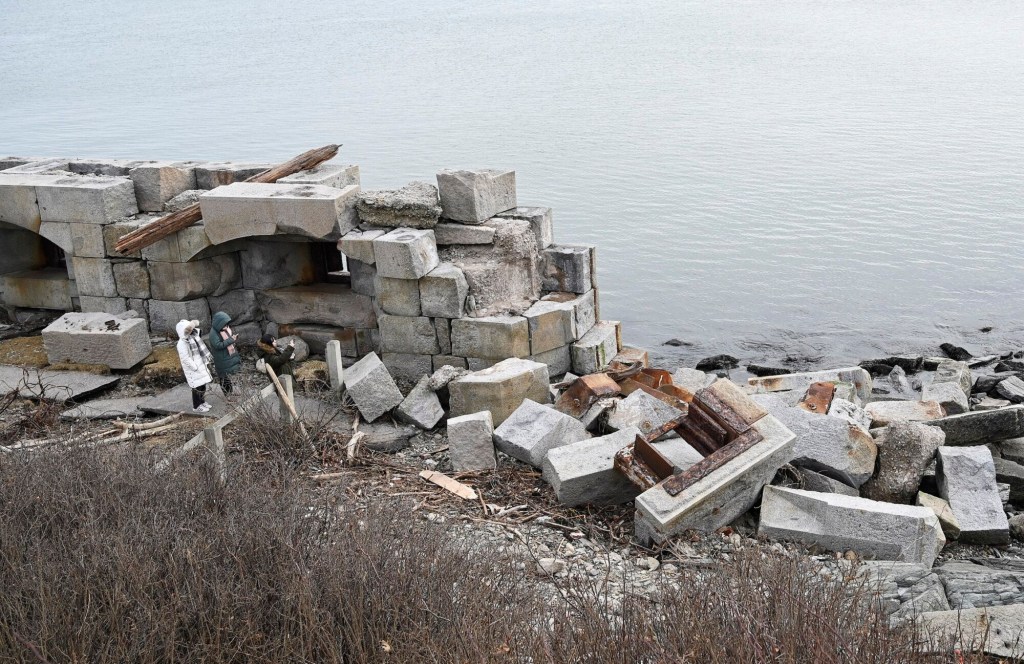
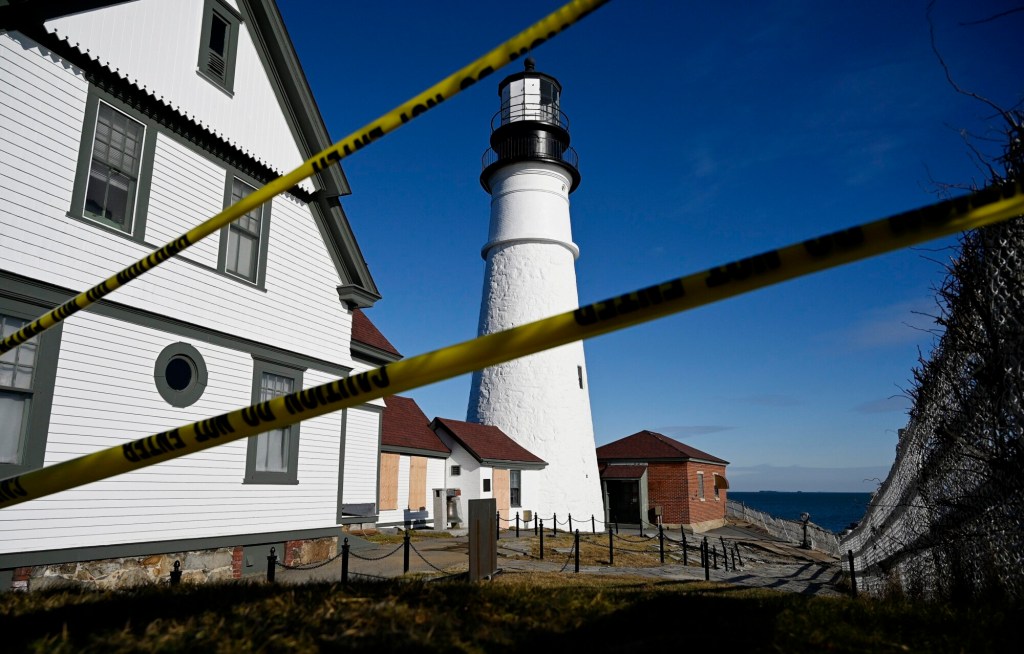
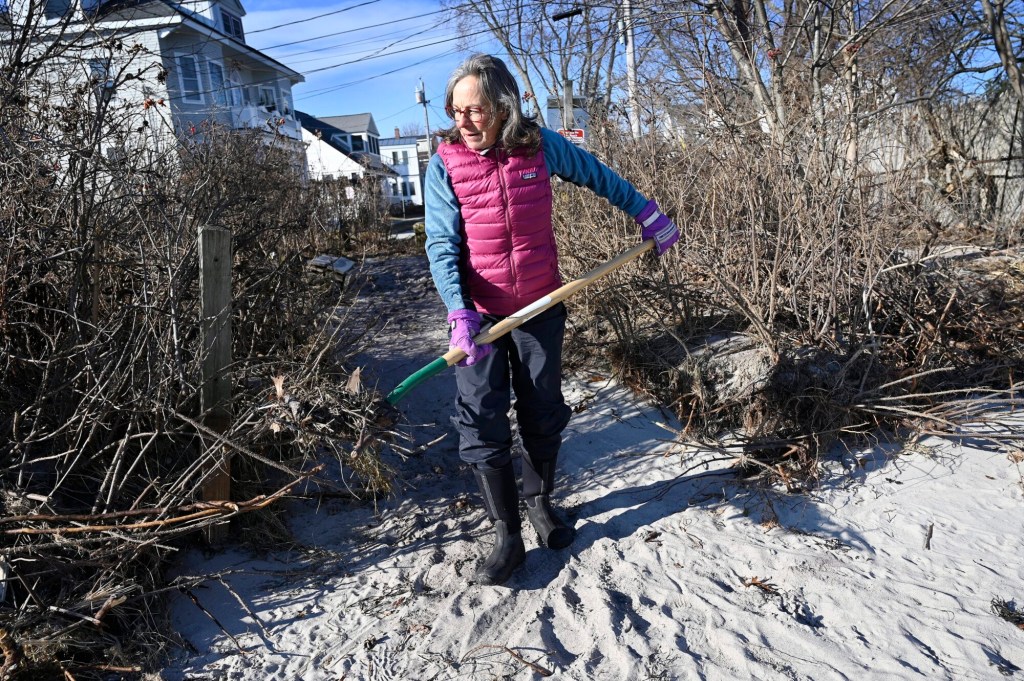

Success. Please wait for the page to reload. If the page does not reload within 5 seconds, please refresh the page.
Enter your email and password to access comments.
Hi, to comment on stories you must . This profile is in addition to your subscription and website login.
Already have a commenting profile? .
Invalid username/password.
Please check your email to confirm and complete your registration.
Only subscribers are eligible to post comments. Please subscribe or login first for digital access. Here’s why.
Use the form below to reset your password. When you've submitted your account email, we will send an email with a reset code.